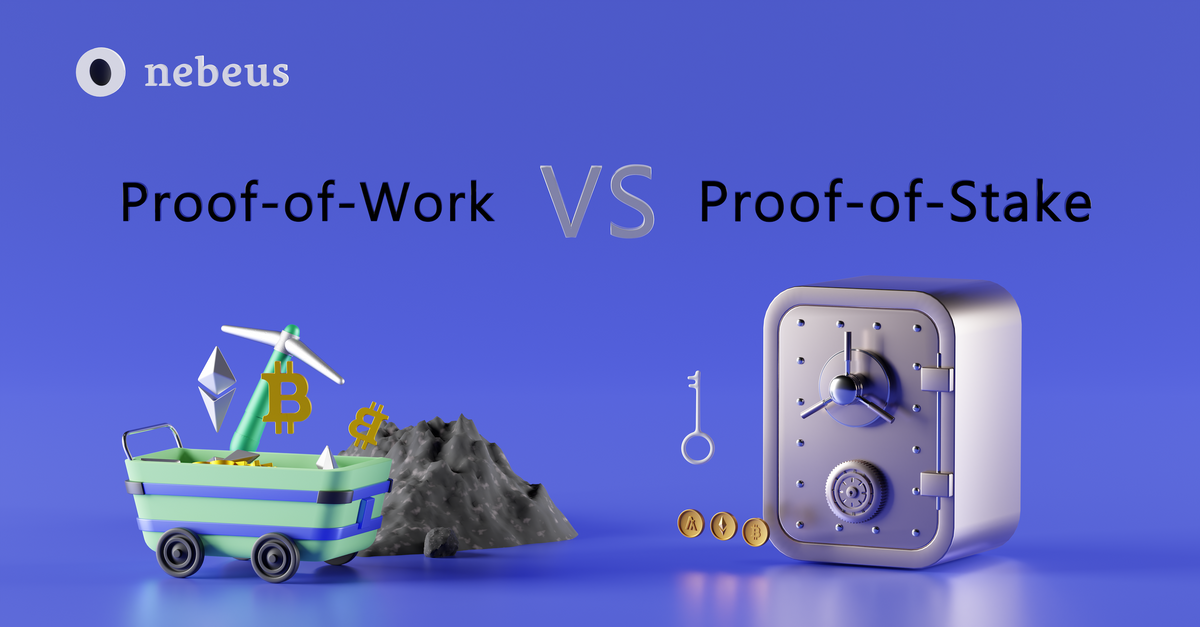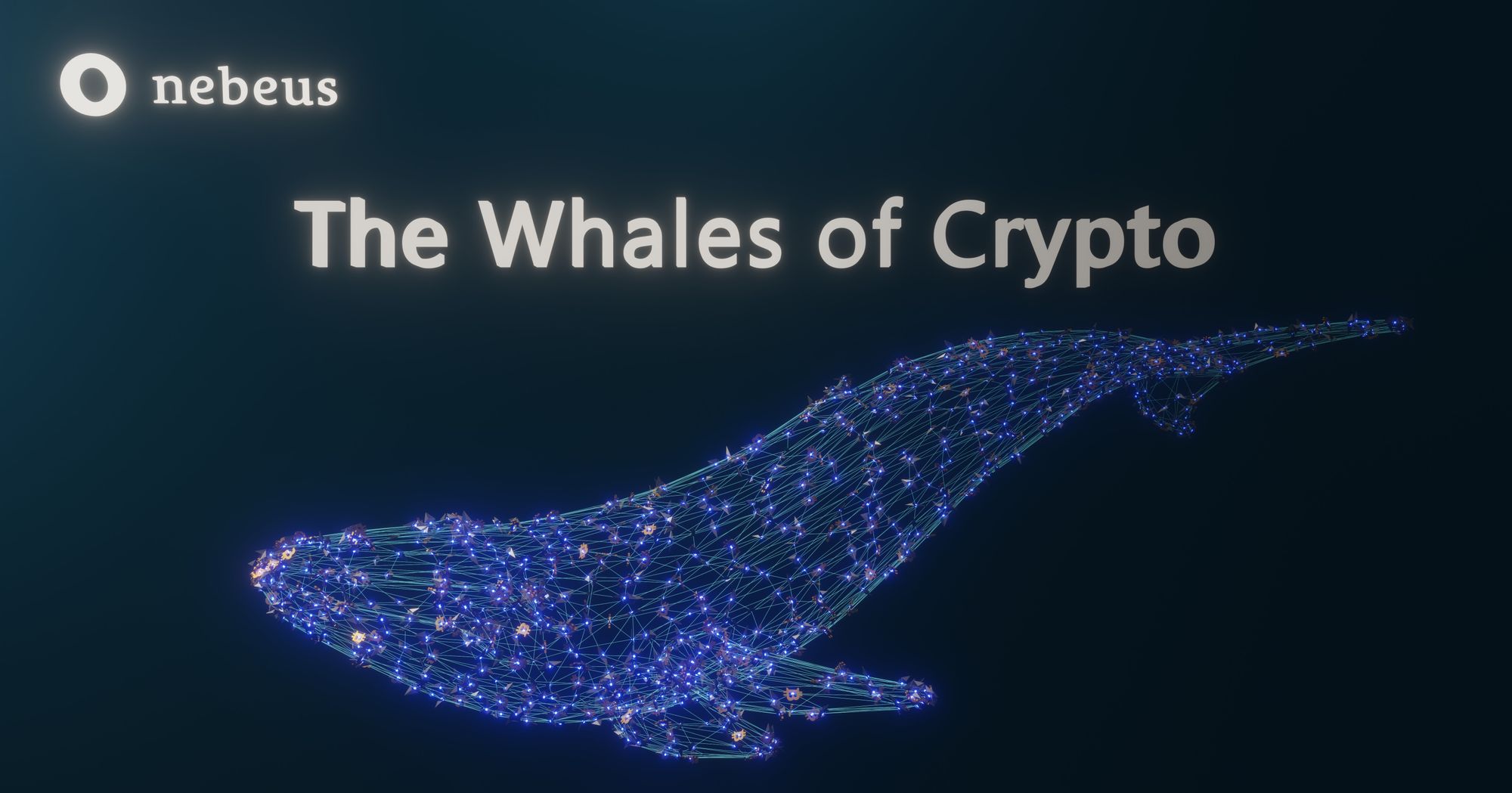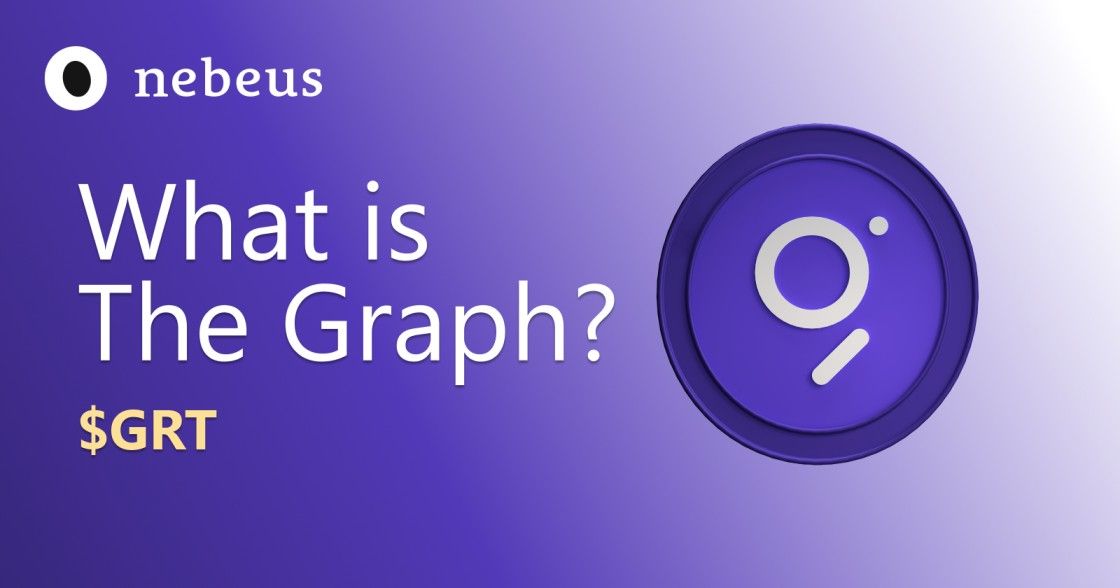The world of crypto is brimming with technical terms, concepts, and ideas that mystify the average holder. Including the two terms above: Proof-of-Stake (Pos) and Proof-of-Work. Sometimes, there is a confusion between the two. They serve the same function of helping maintain the Blockchain, but have different approaches to their aim. Understandably, when investing in Crypto the jargon isn't entirely something so intriguing to learn. However it is important to note these terms, their workings, and why they exist to understand their importance to the industry.
Proof-of-Stake (PoS) VS Proof-of-Work (PoW): what's the difference?
Proof-of-Work Definition: What is PoW?
A Proof-of-Work is one of manu decentralised consensus mechanisms that needs members of a network to put the effort into solving a unique mathematical puzzle to verify transactions and prevent anybody from falsifying the system. The PoW mechanism is used in cryptocurrency mining for producing new tokens and validating transactions.
Proof-of-Stake Definition: What is PoS Consensus Mechanism?
A Proof-of-Stake is essentially a cryptocurrency consensus mechanism. They exist for the sake of processing transactions and spawning new blocks in a blockchain. Through a consensus mechanism, entries are validated and secured on a distributed database. This database for Cryptocurrency is the blockchain, and the consensus mechanism helps maintain its operations.
How does Proof-of-Work work?
Proof of Work is the original validating mechanism. It is a consensus mechanism and algorithm built to establish trust within decentralized networks. In these cases, Proof of Work is utilised within Bitcoin and other cryptocurrencies to validate new batches of data and transactions on Blockchains. It requires members of a network to solve a mathematical puzzle to verify transactions. These puzzles are called hashes, long strips of numbers that serve as Proof of Work. Solving these equations is a hard task, and participants, called Miners, are rewarded with crypto for accurately verifying new data.
How does Proof-of-Stake work?
Now we have briefly explained what Proof of Stake is, naturally we need to understand how it works. Proof of Stake was built as an alternative and faster method of Proof of Work, which is a way of verifying transactions within a blockchain. Proof of Stake cryptocurrency works through Staking.
Staking is when Participants, often called Validators or Stakers, lock up a certain amount of cryptocurrency in a smart contract that is hosted on the Blockchain. Once locked up, the Participants have the opportunity to be chosen to validate the next block in the chain. The more proof of stake cryptocurrency staked, the better the opportunity to be selected in the process. When the block is validated by the chosen Validator and the objective is cleared, that Validator is rewarded with newly mined crypto for their work.
Proof of Stake vs Proof of Work, a brief comparison:
So, what are the key differences between Proof of Stake and Proof of Work?
What to choose: PoS or PoW?
Both mechanisms have their swaying advantages and disadvantages. These need to be considered before setting up a network or system to verify cryptocurrencies and tokens. Here are a few more advantages and disadvantages of both, to be considered:

Proof of Work Advantages
The main advantage of Proof of Work rests in the process of verifying information. It encourages speed with the Miners, each competing to verify blocks of data to reap the rewards of their hard work. It encourages efficiency and accurate information when validating data.
Due to the cost of the hardware and energy that comes with it, Miners have also sought renewable energy alternatives to ensure they aren't contributing largely to CO2 emissions.
Proof of Work also converts surplus energy into cryptocurrency. The trapped energy produced through mining can be converted into value with mining software and hardware.
Proof of Work Disadvantages - Lots of Computing Power
Of course, the most glaring issue is the energy consumption and the costly nature of it when it comes to establishing Proof of Work, mining, and validating cryptocurrency transactions on the Blockchain. This is a massive issue that the world of crypto is attempting to innovate against. For instance, with renewable energy farms to mine crypto. Some Miners have built farms powered by Solar energy.
The technological innovations to address this expenditure of energy costs can also become quite outmoded as new advancements are made. For instance, microchips for these super built computers are able to handle the heat and contribute to making the process of mining crypto faster.
As advancements are made, older chips may become pointless and ineffective to use, adding to a lot of e-waste. The most glaring issue is the monopolisation of Proof of Work services. Many Miners hoard cryptocurrency through farms, and due to the enormity of the hardware needed for farms plus the amount of crypto already owned by Miners, it makes it incredibly hard to set up a network to validate transactions through Proof of Work.
Proof of Stake Advantages
The main advantages of a Proof of Stake approach is its efficiency. It is cost efficient, without the overwhelming set up costs of a Proof of Work system, where hardware, computing power, and energy costs need to be factored in.
As we noted in the table, scalability is also a key advantage for Proof of Stake. Its cost efficiency and quickness in terms of staking makes it ideal to introduce new Validators. It does not require super computing power or hardware, like many Miners supercomputers built to handle the heat of mining Crypto
Proof of Stake also bridges the gap between a general public not so well versed in the workings of crypto, and a process that ensures a reward for partaking in them. It is quick, easy, and inviting.
Proof of Stake Disadvantages
This all being said, Proof of Stake doesn't come without understandable critique. It is unproven in terms of scalability when contrasted with the vastness of Bitcoin and Ethereum.
There is also coin consolidation. Proof of Stake can cause the hoarding of coins and tokens if Validators within a network opt to focus on hoarding one coin.
Although this may bolster rewards by increasing the worth of the coin/token, it promotes centralisation and defeats the purpose of decentralised systems.
The security surrounding Proof of Stake is also questionable. The lack of cost going into setting up a Proof of Stake makes it easy for anybody to do. The ongoing costs in a Proof of Work system make it worthwhile and secured with layers of things to do.
Frequently Asked Questions
Can Bitcoin be converted to Proof of Stake?
Theoretically, there is nothing preventing Bitcoin from changing its method of validating data to Proof of Stake from Proof of Work - and it just might occur in the future.
The issue remains in the monopolisation of crypto, in this case Bitcoin, where 95% of the resources are controlled by 6 of the largest Bitcoin mining pools.
Since they work to validate all these transactions, and build farms to manage the computing power for these processes, it would be costly, and delegative in a sense of sharing resources they already own en masse.
The investors who live by the PoW system would lose out on a love of investment if converted to PoS. They would also make significantly less.
However, you can stake Bitcoin in centralised platforms as Nebeus via off-chain staking. This means that users will receive rewards by depositing their assets in an external platform, distinct from the one in the blockchain.
The users get the same rewards but in reality, their assets are not serving to validate transactions.
Will Proof of Stake take over Proof of Work?
PoS won't take over PoW, but an alternate method may do so. The biggest reason being the impact PoW has on the environment, the energy it uses and the e-waste it can create.
Another key reason is the fact that Proof of Work enables an honest and healthy competition. The process of using a proof of work network for transactions on the blockchain is entertaining for some people, the rewards gained also a big factor.
With PoS, the reward for Staking crypto is nowhere near as great as being rewarded for verifying hashes where a Miner may receive a certain amount of Bitcoin or Ethereum.
The idea of PoS taking over PoW also assumes that another coin wouldn't spawn, requiring PoW to mine and maintain transactions on its Blockchain.
Which is better proof-of-stake or proof-of-work?
It depends on the perspective.
Proof-of-work (PoW) is considered better in terms of maintaining the security and integrity of the blockchain, as it's harder to tamper with. However, it requires more power.
It's also been tested over a longer period of time. However, proof-of-stake (PoS) has lower energy consumption, is more cost-efficient, and has potential for quicker transactions. PoS also offers the advantage of scalability.
However, the choice between PoS and PoW will depend on the specific requirements of a blockchain project, including factors like security, speed, and environmental impact related to any more power that's needed.
What is the difference between proof-of-work and proof-of-stake paper?
Proof-of-work (PoW) and proof-of-stake (PoS) are two consensus mechanisms and algorithms used in blockchain technology.
PoW requires miners to solve complex mathematical puzzles to validate transactions and create new blocks, which requires a significant amount of computational power and energy.
PoS, on the other hand, selects validators based on the number of coins they hold and are willing to 'stake' as a kind of deposit.
The 'paper' refers to the documentation that describes how these mechanisms work in detail.
The main difference in the papers would be the mechanisms described and their implications on security, energy consumption, and transaction speed.
What are the downsides of proof-of-stake?
While proof-of-stake (PoS) offers several advantages, there are some downsides as well.
First, it's less proven in terms of security and scalability compared to proof-of-work (PoW).
Second, PoS can lead to coin consolidation, where validators might focus on hoarding a particular coin, promoting centralization and going against the principle of decentralized cryptocurrency networks.
Lastly, the security surrounding PoS could be questionable as the lack of significant upfront investment makes it easier for bad actors to attempt to manipulate the system.
Are you ready? Sign up to start staking your crypto with Nebeus today.
La inversión en criptoactivos no está regulada, puede no ser adecuada para inversores minoristas y se puede perder la totalidad del monto invertido.










